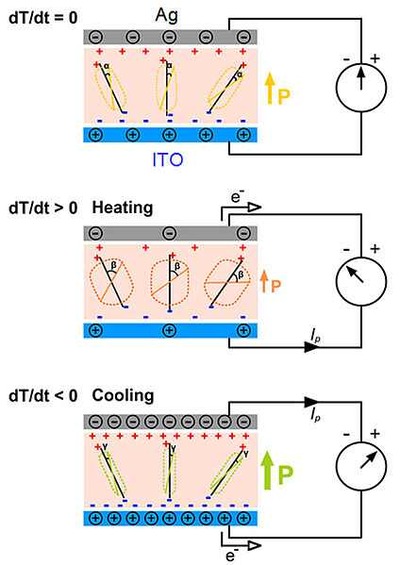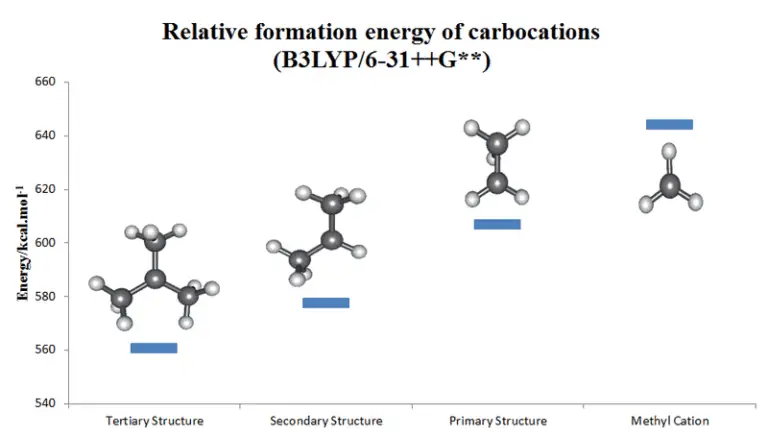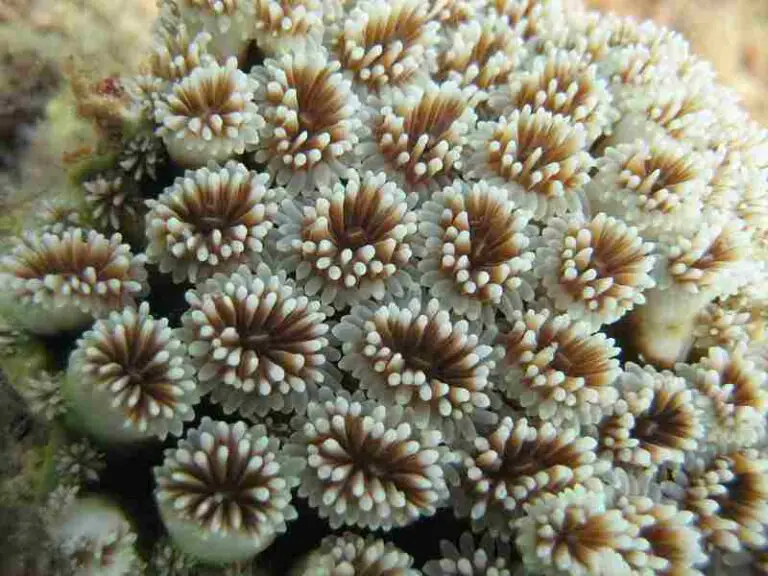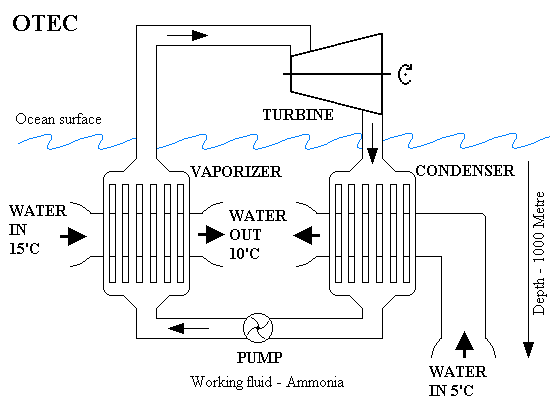Pyroelectric Effect Definition and Comparison Explained
Pyroelectric effect is the effect of temporal changes in temperature, on materials like quartz and tourmaline, whereby the temperature changes produce an electric potential in these materials.
This article discusses pyroelectric effect definition and comparison, as outlined below;
-Pyroelectric Effect Definition: 6 Ways to Define the Pyroelectric Effect
-Piezoelectric and Pyroelectric Effects Comparison
-Difference between Piezoelectric, Pyroelectric and Ferroelectric Effects
Pyroelectric Effect Definition: 6 Ways to Define the Pyroelectric Effect
The pyroelectric effect is a phenomenon whereby electricity flows through a material due to temporal changes in its temperature [5].
In the above definition, it is important to note that the use of the word 'temporal' implies that time-based differences in material temperature are essential to induce the pyroelectric effect.
Below is an alternative pyroelectric effect definition that portrays it from the perspective of pyroelectricity;
Pyroelectric effect is the exhibition of pyroelectricity in a group of materials which generate temporary voltage when subjected to significant changes of temperature with time.
The group of materials referred to above can be described collectively as pyroelectric materials. In the alternative pyroelectric effect definition below, some properties of pyroelectric materials are highlighted;
Pyroelectric effect is the sum total of the properties of pyroelectric materials, which include; temperature-dependent surface capacitance, non-centrosymmetry, spontaneous dipole moment, and temperature-coupled electric polarization.
Below is an alternative pyroelectric effect definition that mentions some examples of pyroelectric materials;
The pyroelectric effect refers to the generation of electricity in ceramic, polymeric, biological and crystalline materials like; lead zirconate titanate, quartz, tourmaline, polyvinlidene fluoride, triglycine sulfate, collagen and lithium tantalate, due to changes in temperature.

Some applications of pyroelectricity can also be used to define the pyroelectric effect, as shown below;
Pyroelectric effect is the flow of electric charges through materials in response to temporal changes in temperature, which is used in; fire alarms, infrared sensors, thin-film insulators, gas and thermal imaging [3].
Lastly, the definition of pyroelectric effect is outlined based on comparison between pyroelectric and piezoelectric concepts;
Pyroelectric effect is the phenomenon of electricity generation by thermal energy fluctuation, which differs from piezoelectricity that is concerned with electricity generation by mechanical stress application [4].
Piezoelectric and Pyroelectric Effects Comparison
Piezoelectric and pyroelectric effects refer to the release of electric charges as a result of mechanical pressure application, and the generation of electric potential due to changes in temperature with time, respectively.
The piezoelectric effect is area-dependent, so that the magnitude of piezoelectricity is proportional to the span of the area on which stress is applied.
On the other hand, the pyroelectric effect is time-dependent, meaning that the magnitude of pyroelectricity in any material is proportional to the rate of change in temperature [1].
All known pyroelectric materials are piezoelectric, and this can be attributed to the fact that both pyroelectricity and piezoelectricity depend on spontaneous polarization; which is the ability to generate electric charge potential in the absence of an electric field [6].
However, there are some classic pyroelectric materials and some classic piezoelectric materials, where each group strongly exhibits pyroelectric and piezoelectric characteristics respectively.
Some materials with strong pyroelectric attributes may exhibit weak, inconsistent, or irregular piezoelectric attributes, and vice-versa.
In summary, the main difference between pyroelectric and piezoelectric effects is the role of temperature, pressure, area and time in each of these phenomena.
The following table summarizes the difference between pyroelectric and piezoelectric effects;
Comparison Criteria | Pyroelectricity | Piezoelectricity |
Electric Charge Inducer | Temperature changes | Pressure application |
Differential factor | Time | Area |
Difference between Piezoelectric, Pyroelectric and Ferroelectric Effects
The difference between piezoelectric, pyroelectric and ferroelectric effects is; piezoelectric effect is electric charge induction by mechanical stress, pyroelectric effect is charge induction by temperature change, and ferroelectric effect is reversible, spontaneous charge induction.
As earlier stated, both pyroelectric and piezoelectric effects involve spontaneous electric polarization in the absence of an external electric field.
Ferroelectricity is also induced in materials without need for an electric field. However, when and electric field is present, ferroelectric materials can change the direction of their polarization [2].
This is not achievable by materials that are exclusively piezoelectric and/or pyroelectric, so it can be described as a unique attribute of ferroelectric materials.
Because of their capacity for spontaneous polarization, all ferroelectric materials are pyroelectric and piezoelectric as well.
Conclusion
Pyroelectric effect is the induction of electric polarization in materials when they are subjected to significant temperature changes with time.
Piezoelectric and pyroelectric effects can be differentiated based on the inducer of electric polarization; which is mechanical stress for piezoelectric effect, and temperature changes for pyroelectric effect.
Piezoelectric, pyroelectric and ferroelectric effects are all similar in that they do not depend on an external electric field.
The difference of ferroelectric effect from piezoelectric and pyroelectric effects is based on the fact that electric dipoles in ferroelectric materials can be reversed under the influence of an electric field.
References
1). Bhatia, B.; Karthik, J.; Tong, T.; Cahill, D. G.; Martin, L. W.; King, W. P. (2012). "Pyroelectric current measurements on PbZr0.2Ti0.8O3 epitaxial layers." Journal of Applied Physics 112(10). Available at: https://doi.org/10.1063/1.4766271. (Accessed 28 February 2023).
2). Khanbareh, H. (2016). "Expanding the Functionality of Piezo-Particulate Composites." Available at: https://doi.org/10.4233/uuid:aab2497d-6eec-4956-8c15-8f5fdedc94f3. (Accessed 28 February 2023).
3). Thakre, A.; Kumar, A.; Song, H. C.; Jeong, D. Y.; Ryu, J. (2019). "Pyroelectric Energy Conversion and Its Applications-Flexible Energy Harvesters and Sensors." Sensors (Basel). 2019 May 10;19(9):2170. Available at: https://doi.org/10.3390/s19092170. (Accessed 28 February 2023).
4). Whatmore, R. W. (1991). "Piezoelectric and Pyroelectric Materials and Their Applications." In: Miller, L.S., Mullin, J.B. (eds) Electronic Materials. Springer, Boston, MA. Available at: https://doi.org/10.1007/978-1-4615-3818-9_19. (Accessed 28 February 2023).
5). Whatmore, R. W.; Watton, R. (2001). "Pyroelectric Materials and Devices." In: Capper, P., Elliott, C.T. (eds) Infrared Detectors and Emitters: Materials and Devices. Electronic Materials Series, vol 8. Springer, Boston, MA. Available at: https://doi.org/10.1007/978-1-4615-1607-1_5. (Accessed 28 February 2023).
6). Zakharov, D.; Gusarov, B.; Viala, B.; Cugat, O.; Delamare, J.; Gimeno, L. (2013). "Combined Pyroelectric, Piezoelectric and Shape Memory Effects for Thermal Energy Harvesting." Journal of Physics Conference Series 476(1):2021. Available at: https://doi.org/10.1088/1742-6596/476/1/012021. (Accessed 28 February 2023).





